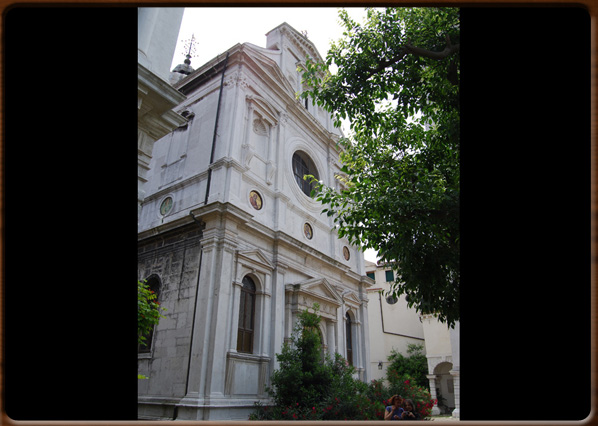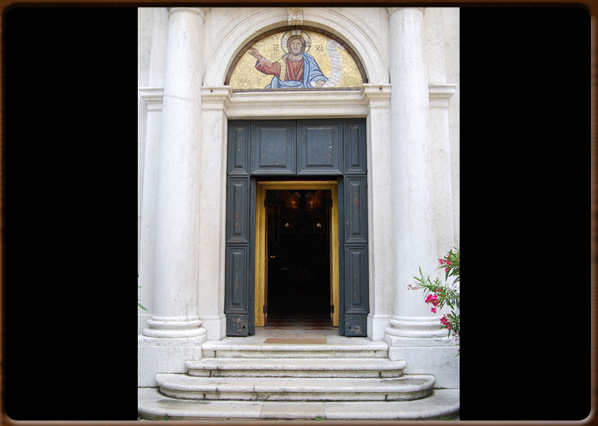
San Giorgio dei Greci Church.

The portal.


No video
Links between the Venetian Republic and the Greeks go back a long way. In 1081 Venice helped the Eastern Roman Emperor, Comnenus, against the Normanni who were preparing to attack his possessions, among them Greece.
The following year, to show his gratitude, the emperor granted Venetian merchants various privileges, thus helping the Venetian Republic begin its military and political supremacy of trade in the Levante.
Over a century later, when Venice gained control over the large islands of Corfu and Crete following the Fourth Crusade (1204), many Greeks, mostly sailors and traders, started to migrate to Venice encouraged by the Senate. A larger wave of Greek immigrants was seen in the early decades of the 14th Century due to the Turks’ expansionist policy. With the collapse of the Byzantine Empire in 1453 leading to the Greek Diaspora in Venice, their numbers expanded rapidly throughout the lagoon area.
The Greek community was, at that time, the largest foreign component in Venice (more than 4,000 in 1440-1500).
In 1498 the Council of Ten granted them the right to form a confraternity based in the Church of San Biagio.
The Greek community’s power grew in the 16th Century, thanks to this confraternity, organised and administered by a board, also called a “banca” (bank) and chaired by Gastaldo (the “guardian grande”).
More refugees swelled its numbers, engaged in various trades and professions: sailors and merchants, craftsmen, labourers, artists, intellectuals and soldiers.
The latter, the “Stradioti”, soldiered alongside the Venetian troops and were renowned for their zeal and courage, forming a unit of light cavalry famous for its valour.
In 1511 the construction of the church of San Giorgio was approved and granted. This is the oldest and best Greek Orthodox church in the West.
Thanks to printing of major classical works, Venice quickly became the main centre of Hellenistic studies in Europe during the late 15th Century and early 16th Century.
The Greek community’s cultural activities expanded thanks to the Scuola Greca and the Collegio Flanghiniano founded in 1662 to provide a base for the most eminent Greek scholars and writers of the time.
Greek schools and printers were very active in Venice: with the help of prominent intellectuals, the foundations were thus laid for the national awakening leading to the Greek’s bid for national independence in the 18th Century.
In 1797, with the fall of the Republic of Venice, the Greek confraternity entered a period of inevitable decline: as happened with the other “scuole”, Napoleon confiscated its funds, treasures and assets.
1100 - 1200 - - rev. 0.1.7